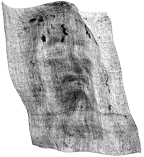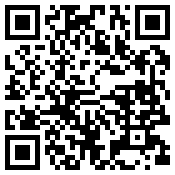Studio Sindone
The new website about the Shroud: a matter of reason, not of faith
A MESSAGE IN CODE FOR THE MAN OF THE 21st CENTURY?
by Antonio Bonelli
The conflict between faith and science, and between faith and reason,
is one of the most amazing swindle of human history.
Summary
- The "history" and its limits in the Shroud affair
- What's the response of "science"? - First Part
- What's the response of "science"? - Second Part
- How had that extraordinary image formed?
- The "affair" of the C14 dating
- Who is the man of the Shroud?
- Discussion
How had that extraordinary image formed?
If negativity, with the other several and converging data(11), exclude that the image is a painting work, how had it form? To find it out, photo-pictures were no more enough: the research had to turn directly to the fabric. After some initial approaches in 1969, the modern science got truly and definitely involved in the "Shroud Affair" in 1978 when, with the consent of its the "caretaker", the archbishop of Turin cardinal Anastasio Balestrero, landed in that city for a five-day round-the-clock study directly on the Shroud thirty-six American scientists, some Italian and one Swiss, grouped together into the STURP, Shroud (Sindone) of Turin Research Project, and working in twenty-six sectorial teams already set up long beforehand. They were followed by seventy-two containers with six tons of the most sofisticated instruments placed at disposal by the space programs of the NASA, the Pentagon, the air and aerospace industry, so as by other American privat and university institutes. Never before had such an amount of brains and means been put together around a single object. I here omit the researchers' names, as meaningless for most people; but mentioning some of the involved institutions can give an idea of how serious and reliable the project was:
- New England Institute of Massachusetts;
- Los Alamos National Scientific Laboratory, New Mexico;
- Santa Barbara Research Center, California;
- US Air Force Weapons Lab;
- US Air Force Academy;
- Jet Propulsion Laboratory of Pasadena, Texas;
- Loockheed Corporation;
- Nuclear Technology Corporation;
- University of Colorado;
- Brooks Institute of Photography, Santa Barbara;
- Rocky Mountain Thermograph;
- Institute of Forensic Medicine of Turin University.
The branches of science at work? Chemistry and biochemistry, physics, anatomy and physiology, hematology and immunology, history and science of fabrics, just to mention a few, spreading over the computerized analysis of images, spectroscopy, X-ray and fluoroscence exposures, radiations of all kind and wave-lengths, direct, stereoscopic, electronic and scanning microscopy, and others more (for detailed informations see of K.E. Stevenson and G.R.Habermans Verdict on the Shroud, Servant Publications, Ann Arbor, Michigan 1981).
What has emerged from the STURP researches is so surprising, that to find something capable to stand comparison in the field of discoveries we should think to the Rosetta Stele, the famous archaeologic find (now in the British Museum of London) that, brought to light from the dead sands of the Nile Delta by Napoleon's unemployed soldiers, disclosed us the esoteric language of the hieroglyphics and the fabulous world of the Pharaohs. We'll come later back to the point.
What's the surprising discovery? That the image owns a tridimension information in code that neither the human eye, nor the camera can perceive. Tridimensional or TD-information means, that in every point of the image the lights and shades are bound by a precise and fixed mathematical relation with the plane tangent to the forehead for the anterior aspect of the body and the analogue tangent to the nape for the posterior, in such a way that, once established that all the white points lies at the surfice and all the black at the greatest depth, every other point finds itself at a level related to the tone of the gray. In clearer words: all points of the same gray lie at the same depth. It was also discovered that this planar relationship is not linear but quadratic. So, we have to deal with a system governed by rigid mathematical rules. It must be noted that photo and TD are properties only apparently similar. In the former, in fact, the lights and shades depend solely on an amount, the amount of light, in the latter on a distance. As the disclosure of negativity needed a tool, i.e. a camera, in the case of tridimensionality the role was played by a computer and a very complex program that, realized on purpose to transduce in depth the scale of grays, was capable to render in vertical relief the intensity of colours.
When Jackson and Jumper, two scientists of the USA Air Force, thought to put hands on this trial on a picture of the Shroud - and it was a true intuition, if the term inspiration raises suspicious -, the computer turned under their bewildered eyes a plane image into an image in relief. In other words, the design had become a statue and, what's more, a statue with perfect anatomic features, in particular with a visage bearing the unmistakable marks of death. The same experiment was later carried out with similar outcome by other researchers.
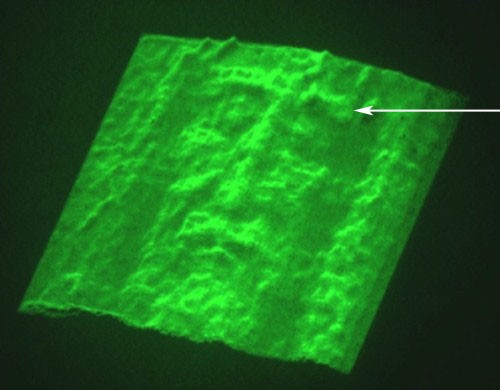
Fig. 5: the tridimensional rendering of Visage
with the circular trace of coin
(Source: G. Bazoli)
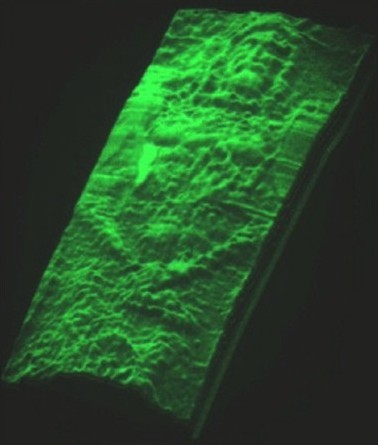
Fig. 6: the tridimensional rendering of body
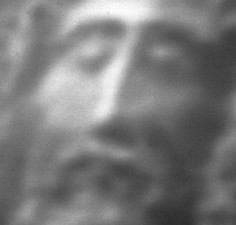
Fig. 7: the Visage in relief cleaned from signes of Passion
(Source: Tamburelli 1984, by Baima Bollone L'impronta di Dio, The imprint of God)
Now, not a single one painting, antique, modern or of present days is known to own the 3D code information; even more surprising, nobody was or still is able to realize one a such if wanting to. Beyond reasonable doubts, and according with other proofs also if the greatest value (see note 11), but now confined in second row behind this discovery, the TD property of the image is the ultimate argument to rule out a man as the author of the Shroud's image.
We must now mention another unbelievable find: on the upper eyelids lie two coins.(12) An Italian amateur researcher, printing in various single colours the pictures taken in 1969, had reported before the 1978 STURP the presence there of two round images in reliev, later recognized as coins by American and Italian scientists who printed the pictures with many filters and worked them on through electronic elaboration. On the many times enlarged pictures of 1931, the American Jesuit Francis L. Filas, Professor of Theology at Chicago Loyola University and member of the STURP, could even read on the right coin four letters, UCAI, and a design looking like a question mark, but specular to it.
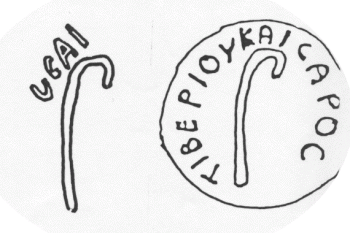
Fig. 8: the little right coin with the letters UCAI and a similar lepton
(Source: Baima Bollone Sindone o no, Shroud or not)
This allowed to identify the coin with a λεπτóν ou lepton, lituus in Latin, since bearing on the verso the "lituus", i.e. the crook of the augurs similar to a crosier. It was a little bronze coin of the least value, one of the two minted by Ponzius Pilate in Syria between the years 29 and 32 with the Greek inscription of Tiberius Emperor. The discovery, presented at the 1979 Meeting of American Sindologists in Los Alamos, rose embarrassing skepticism. In fact, the Pilatus' lituus well known to numismatists, around a sort of withe - the lituus - bears the inscription TIBEPIOUKAI CAPOC, whereas Filas had read UCAI: an ingenuous, clumsy attempt to contrive new proofs? Later on, however, new researches ad hoc about ancient coins carried out in museums and private collections, did find a couple of specimen of that very coin with the same error. The fact was considered rather common by the experts, since Greek was not at that time a current language in Syria, the Roman Province to which Palestine belonged, and even in texts and coins of the same period the errors in Greek were not rare. Furthermore, there might have been more than one mint in that remote Province of the Empire, and rather unskilful for coins of very little value just as the lepton.
An America m.d., Alan Wanger (see Meacham), happened later to identify other letters on the coin image of the Shroud, by overlapping pictures treated with polarizer filters. And a study of the Polytechnic School of the State of Virginia carried out by means of electronic filtration of images and brilliance increase could further decipter the inscription. Also the left coin was identified, though less clearly, as a specimen of the other lituus minted by Ponzius Pilate in the Syrian Province in the 16th year of Tiberius' empire - the 29th or 30th of the Christian era - with the name of JOULIA, the emperor's mother.
It's now time to answer the first question:
Was the science able to clear how that extraordinary image had formed?
On this subject, here's the conclusive report of the STURP researches, published in New London on Oct.1981 (Bonnet-Eymard, Stevenson-Habermas):
"The basic problem from a strictly scientific point of wiev is that some explainations supplied by chemistry are contradicted by arguments of physics. On the contrary, some explainations supplied by physics are absolutely rejected by chemistry. For a reliable reading of the image we must obtain an explaination scientifically correct from chemical and physical standpoints, as well from biological and medical ones. Up today, this kind of solution seems unobtainable despite the greatest efforts of our team. Beyond that, all attempts are failed to reproduce on ancient linen fabrics the identical phenomenon represented on the Shroud."
How should we call this statement, if not a surrender of science? But later on we read in the same document:
"It's reasonable to think that, with new achievements through new researches, it might be possible to work on some new other hypothesis laboriously taking shape; but with the present knowledge nothing can be said on the origin of the image, that therefore remains still a mistery."
Notes
(11) There is no evidence on the image of pigments, other colouring matters, marks and strokes of the brush, signs of a painting style, so the image isn't a painting. Its extra-soft brownness concerns the fibrils of the threads of warp and weft only on their very surface, so that it's not perceivable on the other side of the linen. The tone of brownness is identical in each and all fibres, what makes the lights and shades depend only on the number of browned fibrils per surface unit. The ensuing imprint has a very soft contrast with the linen, has no points of saturation and its highest optic density is exactly equal on both faces of the cloth. This last property means that the image had formed with no pressure on the Shroud, as clearly confirmed by the posterior aspect of the represented corpse, not at all deformed and flattened as it is the rule for soft tissues undergoing weight.
Heat is by far the most credited cause of the image. Yet, nobody ever succeded in experimentally obtaining by means of heat an image somehow similar to that of the Shroud. Beyond that, the brownness due to heat leaves behind traces of pigments, penetrates deep into the fibrils, marks them with different degrees of saturation and alters them so much, to make it easily visible, especially today, with optic tools and a fluorescent lamp. But about this there is no trace on the surface of Shroud. No better chance of success had and has the "hypothesis light", since the Shroud is all but a photo film, and in the XIV century the camera hadn't been yet invented. The stains, referred to blood by devotion and logic of "design", are actually due to blood, human blood of group AB. The halo spread around some of the largest, like the one on the chest, contains human serum albumins, accounting for its fluoroscence.
The stains, which are the only organic material unrelated to the linen itself, are endowed with the property of thickness, so that it's possible to remove them; but they don't show the signs of fragmentation and partial detachments that crusts usually present on bandages removed from wounds. Contrary to the image, they penetrate deep into the filaments to the point they become visible on the opposite side of the cloth; lastly, they are the only parts of the image that are not in negative, and the fibers beneath them are white rather than burnished. In other words, underneath the blood stains there is no image. The evidence suggests that the image had formed after the deposition of the body and upon the blood stains, without passing them through. Moreover, in correspondence of the bodily orifices there is no sign of decomposition, which shows its effects after about 40 hours from death. Which is why we know that the body remained in the linen for no longer than two days. Even if the body had been touched with the most gentle attention while being removed from the Shroud, or if a number of people had agitatedly purloined it, the blood stains would not have shown such well-defined outlines, but in fact signs of smudges and detachment of crusts. Wanting to look at the logical conclusion, we really must assume that the body was neither touched nor removed: the Shroud seems emptied from the inside and crossing through the linen, the body has... vanished. For further elements aiming at excluding human interventions in the shaping of the image see points 7) and 9).
(12) The occasional use of little coins or small objects of the kind to keep corpse's eyes closed is well known and documented by sepulchral finds of the middle-east antiquity.

